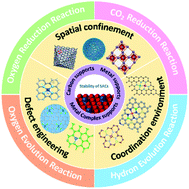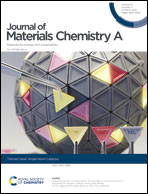Stability of single-atom catalysts for electrocatalysis
Abstract
Single-atom catalysts (SACs) have recently attracted significant attention due to their maximum atom utilization and high efficiency in a series of electrocatalytic reactions. However, the atomically dispersed metal atoms have intrinsically extreme mobility due to their high surface energy. Besides, the harsh reaction conditions of electrocatalysis also challenged the catalytic stability of SACs. The excellent electrocatalytic performance of SACs always degrades under long-term operating conditions. Most previous studies of SACs have focused more on the activity and selectivity of SACs in electrocatalysis, while catalytic stability has received little attention as a more critical factor limiting their large-scale industrial application. In this review, we provide an overview of the recent advances in SACs in terms of selecting the metal and support materials, synthetic strategies, and electrocatalytic applications with a focus on catalytic stability. A deep understanding of the instability behaviors of SACs under different electrocatalytic conditions contributes to the design of effective synthetic strategies to further optimize their catalytic stability, which is particularly discussed. Finally, we present the challenges and prospects for the future development of stable SACs in electrocatalysis.

- This article is part of the themed collection: Single-Atom Catalysis


 Please wait while we load your content...
Please wait while we load your content...